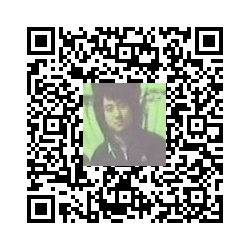- 目前所见最壮观的海啸视频 [2011/03]
- 建议旅日华人尽早逃命--日本核反应堆氢爆分析 [2011/03]
- 日本核堆再次起火,落砂机时报质疑为何日本不如中国 [2011/03]
- 贺梅姐弟妹三人平安回到中国(图、真相) [2011/08]
- 美国人7年前就已预见日本将成为核废墟 [2011/03]
- 日军暴露出战斗力低下 [2011/03]
- 为什么8.9级地震日本房子没倒 [2011/03]
- 桑兰案律师已经势成骑虎 [2011/05]
- 与贺梅父母的通话(2011/07/02) [2011/07]
- 海明应坦诚回应公众对他履历的怀疑 [2011/06]
- 贺梅将于近日返回中国 [2011/08]
- 桑兰案海明服软,承认错误、向被告道歉并作出赔偿 [2012/03]
- 技术歧视-拉登被击杀竟然是现场直播 [2011/05]
- 桑兰案状纸被法院拒收--搞路不清就上联邦法院 [2011/05]
- 日本核反应堆会发生核爆吗? [2011/03]
- 桑兰律师不长进,两个动议均被扔出法院 [2011/06]
- 网友呼叫海明 [2011/06]
- 贺梅母亲解答有关贺梅子妹三人来美国费用的问题 [2011/08]
- 群众游行导致大规模军事镇压其实是法制建设不完善的后果 [2011/06]
- 给贝克捐款的人应该至少替他把用于剥夺罗秦父母权的律师费交了 [2011/08]
- 贺梅来美的思维定式看劣等洋奴的弱智 [2011/08]
- 罗秦严正警告使用贺梅名义与形象骗捐的个人与团体 [2011/09]
- 为贝克募捐的人应该向贝克、罗秦道歉 [2011/08]
- 探讨贺梅案中可能存在的种族问题 [2011/09]
- 天安门挡坦克的青年证明解放军是人民的军队 [2012/06]
RE plagiarism
rootbern@msu.edu
To: Shi Liu
Dear Shi Liu,
Let me begin by saying that I am in no position to determine whether Dr. Fang plagiarized my work or not, since I cannot read Chinese. The issue of plagiarism must be left to people who can read both languages fluently.
Let me next state that the material that Dr. Fang is accused of plagiarizing was copyrighted. That is to say, it is protected against copying by United States law.
On the matter of whether it is ever permissible to copy someone's writings, United States copyright law is very explicit. One may copy only up to about 200 words, which must be placed in quotation marks and attributed to the original author. More extensive copying, whether in fragments that add up to more than 200 words or as a continuous piece, is explicitly forbidden without obtaining written permission from the author or his publisher. U. S. copyright law does not distinguish between scholarly works and popular ones: the law applies equally to both, since both are considered the fruit of intellectual work. Indeed, I consider it more difficult to write for a general audience than to write for my academic peers since it is much more difficult to communicate clearly to those with less knowledge and training.
If Dr. Fang copied any of my words without putting them in quotation marks and attributing them to me, he is guilty of plaigiarism under U. S. copyright law. If he copied extensively from my work, that is not only illegal in the U. S., but morally inexcusable. To claim as one's own the work of another individual is never morally acceptable in any society of which I am aware. Certainly in the U. S., we kick our students out of classes, and sometimes out of our universities, for such infractions and we often sue authors who engage in copyright infringement.
The legal and moral cases against stealing other people's intellectual work, whether written for academic or popular audiences, are clear. Whether Dr. Fang has done so, as I said above, must be determined by people with the appropriate dual-language qualifications.
Sincerely,
Bob Root-Bernstein
附:Root-Bernstein教授的英文论文与方舟子文的对照
Dr. Root-Bernstein :
“There are four primary logical criteria for a theory. It must be (1.a) a simple unifying idea that postulates nothing unnecessary (‘Ocam’s Razor’); (1.b) Logically consistent internally; (1.c) logically falsifiable (i. e., cases must exist in which the theory could be imagined to be invalid); (1.d) clearly limited by explicitly stated boundary conditions so that it is clear whether or not any particular data are or are not relevant to the verification or falsification of the theory.”
方舟子文:
在逻辑上,它必须是:1)符合‘奥卡姆剃刀’的原则,即必须是简明而非繁琐的,而不是包含一大堆假设和条件,为以后的失败留好了退路;2)本身是自恰[洽]的,不能一会说先造动物再造人,一会又说先造人再造动物;3)可被否证的,不能在任何条件下都永远正确、不能有任何的修正;4)有清楚界定的应用范畴,只在一定的条件、领域能适用,而不是对世间万事万物,无所不能,无所不包。
Dr. Root-Bernstein:
“Three [four] empirical criteria are of primary importance as well. A theory must (2.a) be empirically testable itself or lead to predictions or retrodictions that are testable; (2.b) actually make verified predictions and/or retrodictions; (2.c) concern reproducible results; (2.d) provide criteria for the interpretation of data as facts, artifacts, anomalies, or as irrelevant.”
方舟子文:
Dr. Root-Bernstein:
“Sociological criteria also exist for determining the validity of a theory. A theory must (3.a) resolve recognized problems, paradoxes, and/or anomalies, irresolvable on the basis of preexisting scientific theories; (3.b) pose a new set of scientific problems upon which scientists may work; (3.c) posit a ‘paradigm’ or problem-solving model by which these new problems may be expected to be resolved; (3.d) provide definitions of concepts or operations beneficial to the problem-solving abilities of other scientists.”
方舟子文:
Dr. Root-Bernstein:
“Finally, there is a fourth set of theory criteria as well: historical ones. A theory must (4.a) meet or surpass all of the criteria set by its predecessors or demonstrate that any abandoned criteria are artifactual; (4.b) be able to accrue the epistemological status acquired by previous theories through their history of testing—or, put another way, be able to explain all of the data gathered under previous relevant theories in terms either of fact or artifact (no anomalies allowed); (4.c) be consistent with all preexisting ancillary theories that already have established scientific validity.”

博主二维码,光标右键点图片可下载
- [04/01]美军可能替日本守钓鱼岛吗?
- [04/01]笑死!
- [04/02]日本地震、海啸的科学分析(PBS NOVA)
- [04/03]据说,方舟子最近有点烦
- [04/05]日本总算搞了项发明:用报纸堵核泄漏
- [04/05] (ZT)方舟子母校教授就抄袭事宜发表意见
- [04/06]日本排泄核污比随地大小便更为恶劣
- [04/06]海明律师代理起诉CNN的案卷
- [04/06]义和团的问题主要是打输了,如果打赢了
- [04/06]日本核电站向被污染灾民发慰问金12美元被拒
- [04/07]有次在网上看一洋人与汉人争论
- [04/08]海明起诉CNN等于没有开锣
- [04/08]肖传国感谢方舟子(微博转帖)
评论 (0 个评论)
- 穿鞋的蜻蜓:制造哈佛金童的贝壳村虎妈虎爸们
- 纽约桃花:寻找艾胖子
- 谢盛友:谢盛友:海外华文作家如何维权
- 日中日:手足兄弟——不能放弃的永恒财富
- 穿鞋的蜻蜓:师妹言论 让人震惊
- Cannaa:核灾使日本颓废,自暴自弃,丧失优越感
- 我是虔谦:小叹伊丽莎白·泰勒
- xqw63:中国没有女人(六)
- 孔甲己:歪瓜裂枣 鸡飞狗跳 ( 连环画 )
- 让我躲在角落里:为何中国人这么累?
- qwxqwsean:用不着通过日本,新奥,海地救灾看西方办事效率低下
- 穿鞋的蜻蜓:【论战】哈佛学生投书US NEWS:哈佛差劲,别上
- 穿鞋的蜻蜓:【独家】藤校昨放榜 哥大人满为患,学生骂娘
- awang9988:谈双重国籍
- 岳东晓:据说,方舟子最近有点烦
- 微风淡淡:和解滨大侠探讨核电站
- ofox:强烈欢迎美女将脱进行到底(18+)
- HappyUSANA:经国家高等教育评估委员会评审 剑桥大学本科教育不合格
- hu18:信息革命催生交通革命,有望根除全球能源危机











